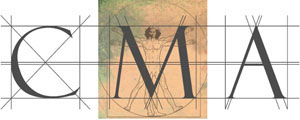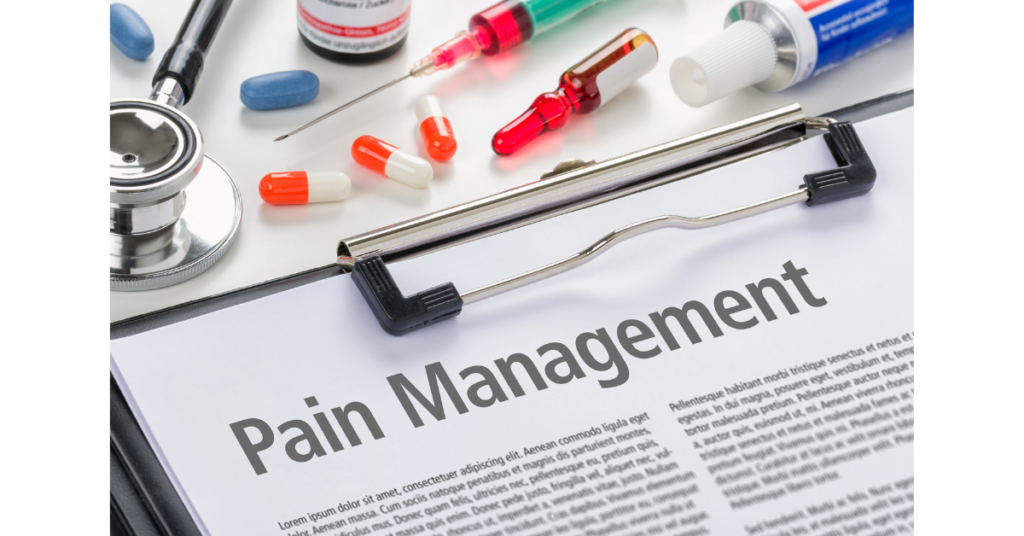Pain Management
Pain is an unpleasant sensation that most of us would do our best to avoid. It can be best defined as a sensory or emotional response to actual or impending tissue damage.
Pain Definitions
Acute Pain: Pain that is often severe, of sudden onset, and lasts a relatively short time. It may result from an injury or an infection and resolves once healed.
Chronic Pain: Pain that continues for a long period of time, medically defined as greater than 3 months.
Referred Pain: Pain experienced in a different part of the body from its cause.
Emotional Pain: The pain and anguish we feel through our mind and emotions.
How common is Pain?
More than 80% of the population in the UK take painkillers on a regular basis.
It is estimated that 10% or more of the population of the UK suffer from chronic pain.
Headaches are the most common type of pain experienced in the UK, with about 30% of the population suffering them every year.
It is estimated that 40% of adults (more than 16 million people in the UK) have back pain lasting more than one day during any one year.
Be prepared: Questions that your doctor / therapist will ask you:
Where do you feel your pain?
When did it begin?
What does it feel like?
How bad is it?
How long does it last?
Is the pain constant or intermittent?
Have you had this pain before?
Does it prevent you from doing your daily activities?
Does it prevent / interrupt your sleep?
What relieves your pain?
What makes your pain worse?
What have you tried for pain relief? What helped? What did not help?
Complementary Therapies and Principles of Treatment
Success in treating patients with pain involves a multidisciplinary and multidimensional approach, incorporating lifestyle changes to achieve optimum health and well-being.
General Principles of Treatment include:
The mind and body are inextricably connected.
Active self-help and health education are central to success.
Good Health is a state of emotional, mental, spiritual, and physical balance.
Treating the root causes of a problem is more important than treating the symptoms.
A successful partnership requires clear communication between the patient, medical doctor and other health practitioners.
Each person is an individual and cannot be treated in exactly the same way as another person.
The body has an intrinsic ability to heal itself.
Environmental and social influences can have a significant effect on a person’s physical and emotional make-up.
Conventional Treatment Strategies
Acute Pain: Very effective.
Chronic Pain: Often ineffective. 5 out of 6 patients with persistent pain take regular pain killers, but an estimated 70% continue to feel severe pain.
Pain killers include simple analgesia such as paracetamol, non-steroidal anti-inflammatory medications (aspirin, ibuprofen, and diclofenac) and stronger opiate based compounds such as codeine and morphine.
Natural Therapies
Western Herbalism
Main uses:
Joint disorders, such as arthritis; headaches and migraines; digestive disorders, such as irritable bowel syndrome; stress-related disorders, and respiratory disorders.
Herbal therapy is the use of plants as medicines to restore and maintain health by keeping the body balanced. It is believed to be helpful at relieving pain or other symptoms associated with the following conditions – of course this is simply a brief example of the many conditions herbal medicine is used to treat:
| Condition | Herb |
| Toothache | Chamomile, or oil of cloves |
| Stomach ulcers | Aloe Vera, licorice, and bilberry juice |
| Cystitis | Try taking teas of cumin, coriander and fennel (1 cup, 3 times a day) |
| Muscle and joint pain | Massage oil of wintergreen into the muscles and joints |
| Migraine | Feverfew leaf or tablets might help prevent / relieve the pain |
| Varicose veins | Hawthorn berries, horse chestnut, or ginkgo biloba might be effective |
Always consult with a qualified herbalist prior to use.
Homeopathy
Homeopathy is a form of medicine that treats the body as a whole and helps it to heal itself. It is effective in treating a wide range of conditions including:
Headaches and migraines
Pre Menstrual Syndrome
Joint ailments such as arthritis and digestive complaints.
| Condition | Homeopathic Remedy |
| Arthritis | Try rubbing rue (Ruta graveolens) cream into the affected area |
| PMS | Suitable remedies include sepia, nat mur, kali carb |
| Shingles | Rhus tox or arsenicum may help |
| Raynaud’s Phenomenon | Try secale, carbo veg. or pulsatilla |
Always consult with a qualified homeopath prior to use.
Naturopathy
Naturopathy is a treatment system that uses natural resources to help the body heal itself. It is particularly useful for relieving pain associated with:
Arthritis
Inflammation
High blood pressure
Period pain
Respiratory disorders
| Condition | Naturopathic Recommendations |
| Gallstones | Hydrotherapy, low-fat diet, take fresh lemon juice regularly |
| Osteoporosis | Regular exercise, diet rich in protein, and supplements vitamin D and calcium |
Relaxation Therapies
Progressive Muscular Relaxation
Relaxation is a state of physical and mental relief, where tension, fear, and anxiety are released and replaced with calm and peaceful feelings. Progressive rhythmical breathing to relax muscles is useful as part of a pain management programme. It has been found to be particularly effective in relieving chronic pains resulting from spinal injury.
Biofeedback
Biofeedback is a system in which electronic instruments provide information about the body that might not otherwise be immediately obvious. It is particularly good for achieving long-lasting pain relief from pain associated with nervous disorders such as fibromyalgia. It has also proved effective at reducing pain caused by stress.
Flotation and Sensory Deprivation
A flotation tank is an enclosed chamber in which the patient floats in water at skin temperature and in total darkness and silence. There is some evidence that this might stimulate the release of the body’s natural painkillers, endorphins.
Mind Therapies
Meditation
Meditation encompasses various contemplative practices, ranging from spiritual to ritual dances and movements. It can be effective in relieving chronic pain associated with stress.
Visualisation
Visualisation is based on the belief that the brain has a subconscious ability to heal. It focuses on using imagination to create attractive and positive images that can be used to heal or change aspects of your life. It is suitable for almost any type of physical or emotional pain related problem.
Psychotherapy
Psychotherapy is an umbrella term to describe a number of approaches focused on providing mental and emotional support to an individual or group. Particularly benefits those with painful disorders caused by deep underlying emotional or psychological problems.
Hypnotherapy
Hypnotherapy is a form of psychotherapy that works on the subconscious to change thought and behaviour patterns. It is suitable for psychosomatic disorders and stress-related conditions.
Autogenic Training
Autogenic training is a system of self-hypnosis that uses mental exercises to switch off the stress reactions of the body with restful, relaxed states. It is effective for relieving the pain from stress-related disorders.
Energy Therapies
Acupuncture
Acupuncture refers to the painless insertion of fine needles into the skin to stimulate specific points called acupoints. It is based on the traditional Chinese theory that pain and illness are the result of excess or deficient energy (qi) in the affected part of the body. Acupuncturists use these needles on special points within the meridians (energy channels) to correct the imbalances in the energy flow and thus relieve pain and illness. Acupuncture is particularly effective at easing chronic pain and stress-related conditions.
Acupressure
Similar to acupuncture the trained therapist administers gentle pressure to the acupuncture points. It is useful in the treatment of headaches and migraines, back pain, and sports injuries.
Kinesiology
Kinesiology aims to treat muscular imbalances that can result in poor posture and pain. It is effective in treating inflammatory joint conditions, headaches, migraine, and neuralgia.
Magnet Therapy
Magnet therapy is based on the theory that each of the body’s cells acts like a magnetic dynamo generating a unique magnetic field. In the presence of disease these tiny electromagnetic fields fall out of alignment and by applying magnets to the affected part of the body, the electromagnetic field is realigned to promote and maintain homeostasis (balance within the body). It has been particularly effective in the treatment of musculoskeletal pain conditions, fibromyalgia, and sports injuries.
Reflexology
Reflexology involves applying pressure to points on the feet called ‘reflex zones’ in order to stimulate the body’s own healing system and relieve pain in corresponding parts of the body. It is particularly suited for generalised disorders and stress-related problems.
Reiki
Reiki aims to re-balance the energy in the body to stimulate the body’s natural healing systems and achieve greater well-being. It is usually used in conjunction with other techniques as part of a pain management programme.
Shiatsu
Shiatsu is a Japanese therapy based on the belief that stimulating points on the surface of the body can influence the functioning of organs deep inside. Useful for conditions such as headaches and migraines, musculoskeletal disorders, and bowel disorders.
Therapeutic Touch
Therapeutic touch describes the ‘laying on of hands’ and is based on the belief that there is an actual transfer of healing energy from the person touching to the person being touched.
Used as an adjunct treatment it might be useful for neck and back pain, irritable bowel syndrome, and during childbirth.
Zero Balancing
Zero balancing combines methods to restore balance to the body’s energy fields with various bodywork techniques. Useful therapy for neck pain, back pain, and stress-related disorders.
Massage Therapies
Massage
Massage is the manipulation of the body’s soft tissues with specific techniques to promote or restore health. It may help to relieve muscular pain as well as releasing muscular tension and stress.
Aromatherapy
Aromatherapy oils are distilled from a variety of plants believed to have healing properties. Essential oils can act either by inhalation or by penetration via the skin. It can help to alleviate muscular tension and chronic neck / back pain.
Movement Therapies
Alexander Technique
The Alexander Technique is a system of postural re-education. Although predominantly a preventative technique, it can also be effective in relieving pain caused by musculoskeletal problems such as recurrent sports-related disorders.
Feldenkrais
Feldenkrais is a system of movement and postural retraining, particularly effective for recurrent muscle and joint pain.
Pilates
Pilates is a system of rehabilitation through non-weight bearing or non-impact exercise. Particularly beneficial for rehabilitation after surgery / illness, arthritis, and lower back pain.
Yoga
Yoga is beneficial for both chronic pain and as part of a therapeutic programme for patients suffering from stress-related disorders.
Manipulative Therapies
Chiropractic
Chiropractic is based on the theory that pain is caused by some dysfunction of the musculoskeletal system. The treatment involves manipulation of the body joints in order to restore normal nerve function and alleviate pain. Useful for sciatica, back pain, joint injuries and headaches.
Osteopathy
Osteopathy is a manipulative therapy that works on the body’s structure to relieve pain, improve mobility, and restore well-being. It differs from chiropractic by tending to focus on the limbs and trunk to improve movement of the joint. Particularly effective for neck / back pain, neuralgias, sports injuries and shoulder / arm / leg pains.
Rolfing
Rolfing is a type of deep-tissue manipulation that stretches and manipulates the connective tissues to restore the body’s balance and improve posture and consequently ameliorate the body’s all-round physical and emotional benefits. Good for pain related to poor posture as well as chronic back and limb pain.

